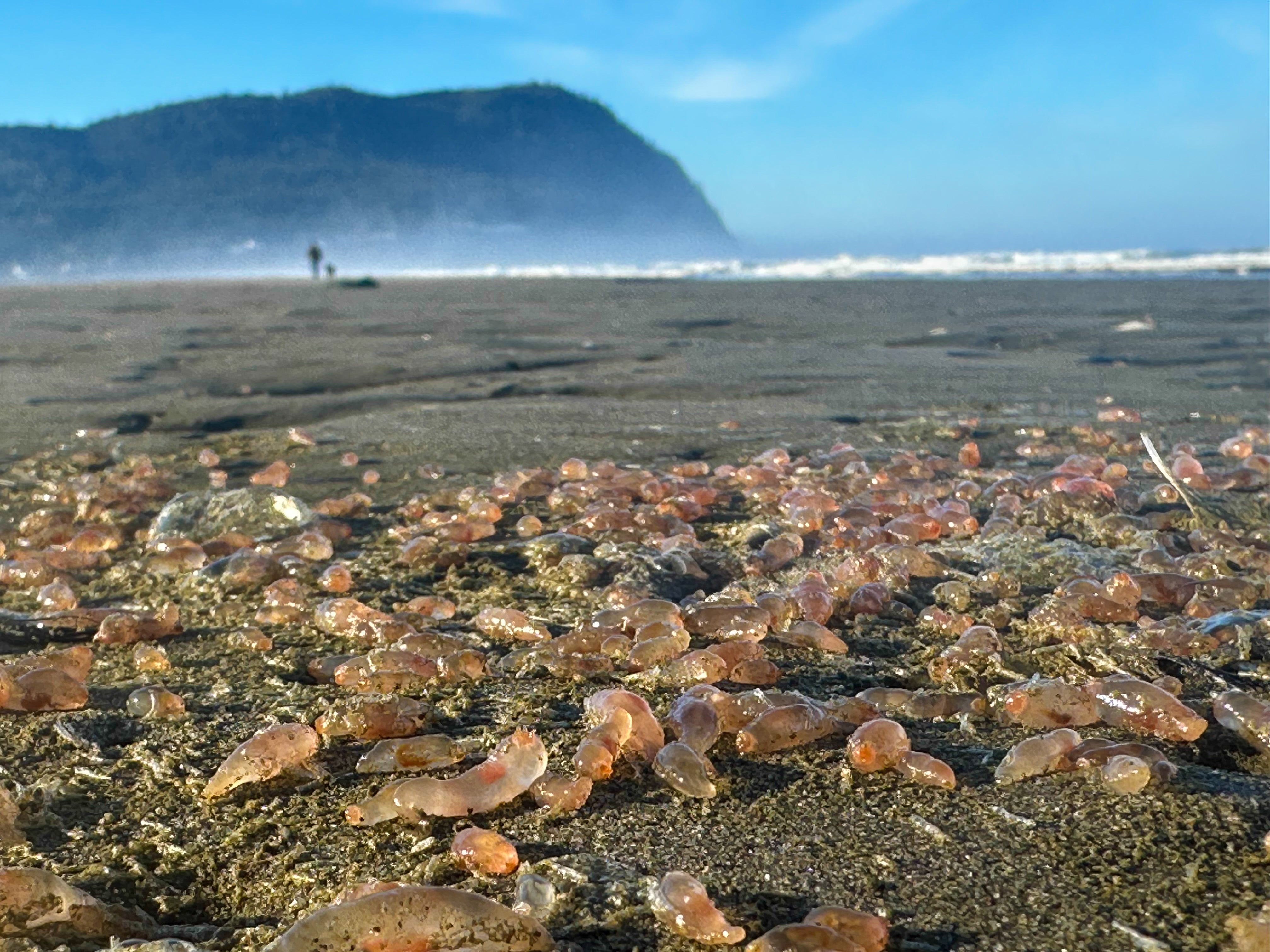
Thousands of peculiar, gelatinous pink sea creatures have washed ashore along a significant stretch of Oregon's Seaside Beach, a rare occurrence attributed to the powerful combination of heavy surf and unusually low tides.
These 'skin breathing' sea cucumbers, known for their partially translucent appearance, typically reside burrowed deep within the sand along the low tideline and further out at sea. However, on Tuesday, they were found strewn across more than 3.2 kilometres (2 miles) of the popular coastal area. Tiffany Boothe, assistant manager of the Seaside Aquarium, confirmed the widespread wash-up.
“They are literally littering the tideline,” Boothe said. They're about a half-inch (1.3 centimeter) long but can grow to about 6 inches (15 centimeters.)
The phenomenon can occur whenever surf and tide conditions coincide, which can mean a few times a year or once in a few years. Sometimes a few will be scattered here and there on the shore but there were large groupings on the beach during this latest episode.

The sea cucumbers aren't capable of returning to their natural habitat on their own so they will dry up and die, Boothe said. They'll provide nutrients for the beach hoppers, beach fleas and other invertebrates living along the tideline that will feast on them. Birds don't eat them.
A map of Oregon's Seaside Beach:
Whatever remains will likely dry up quickly and blend in with the sand. Booth suspects they'll be gone by Wednesday or Thursday.
The scientific name for the cucumbers is Leptosynapta clarki. They live along the coast from northern California to the Gulf of Alaska.
Seaside is about 80 miles (129 kilometers) northwest of Portland, Oregon.







